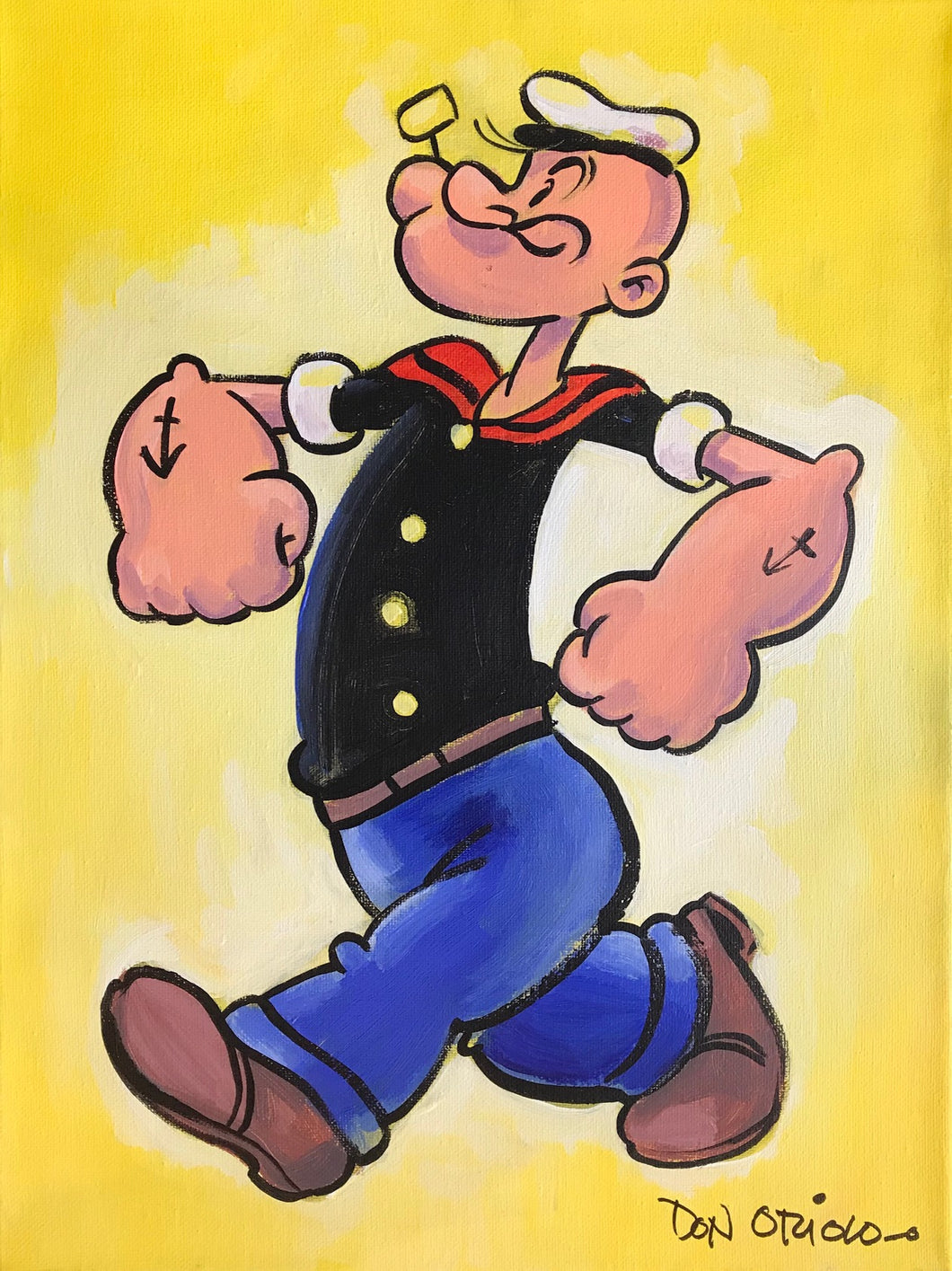Popeye the Sailor, created by cartoonist Elzie Crisler Segar, is an
enduring icon of American popular culture. Debuting in 1929, Popeye
quickly captivated audiences with his distinctive personality and
spinach-fueled strength. Originally appearing in newspaper comic
strips, Popeye soon transitioned to animated cartoons, where his
adventures defending the weak and standing up to bullies endeared him
to viewers worldwide.
One of Popeye's most famous quotes is "I yam what I yam, and that's all
what I yam." This simple yet profound declaration encapsulates Popeye's
philosophy of self-acceptance and authenticity. It reflects his humble
nature and straightforward approach to life, emphasizing the importance
of staying true to oneself despite challenges. This mantra resonates not
only with fans of his adventures but also with artists and creators who
appreciate Popeye's enduring appeal as a character of resilience and
moral integrity.
Popeye's influence on art and animation is profound and far-reaching.
His strong, distinctive character design, with his muscular physique,
squinty eye, and iconic sailor attire, has become instantly recognizable
across generations. Artists and animators have been inspired by Popeye's
expressive personality and physicality, influencing character design and
storytelling in both traditional and digital mediums. Popeye's animated
adventures, often featuring his love interest Olive Oyl and nemesis
Bluto, set a standard for comedic timing and action-packed sequences in
animation, paving the way for the development of animated storytelling
techniques.
Popeye's cultural impact extends beyond animation into broader popular
culture, with his image appearing on merchandise, advertisements, and
even fine art. His resilience, unwavering moral compass, and enduring
catchphrases have made Popeye a timeless symbol of strength and
determination, cherished by art enthusiasts and animation aficionados
alike.







